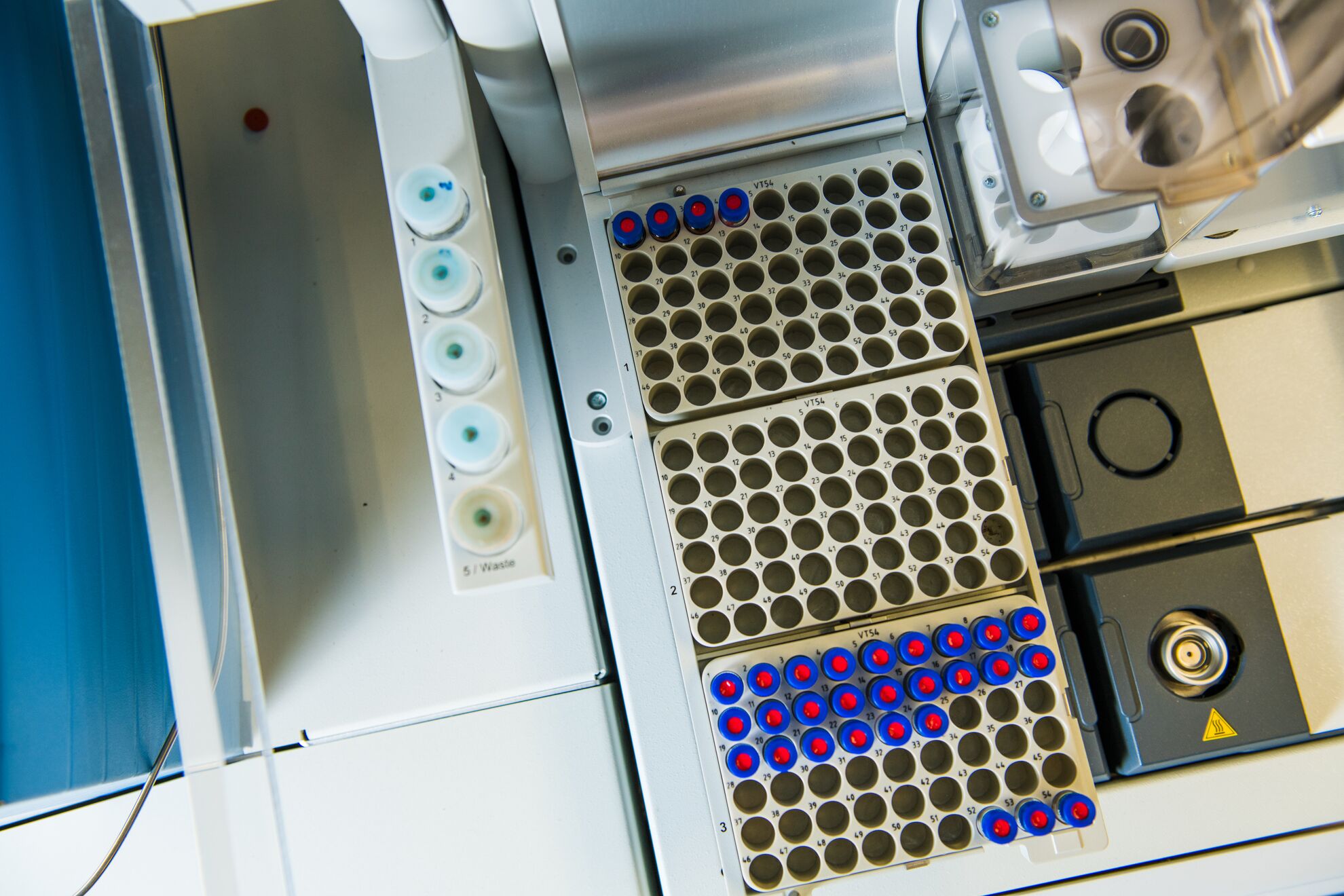Advanced
Metabolomics
Advanced
Metabolomics
Identifying any molecule
in any system
Identifying any molecule
in any system
At PNNL, we use advanced metabolomics techniques to measure, identify, and analyze small molecules in biological systems with high sensitivity and on a large scale. This includes mass spectrometric analysis and prediction of molecular properties to identify unknown chemical structures.
(Illustration by Mike Perkins | Pacific Northwest National Laboratory)
Molecules produced by a biological system reveal the processes it uses to maintain life. At PNNL, researchers identify and quantify hundreds to thousands of these small molecule metabolites in cells, tissues, biofluids, and microbiomes. We are looking for patterns that could be used in part as indicators of chemical exposure, how gut microbes influence health, or how a disease works.
Our researchers have developed a mass spectrometry platform to measure molecules in blood and urine rapidly and with high sensitivity. We use it to screen clinical samples from large cohorts and collaborate with consortiums mapping cellular changes in diseases such as childhood diabetes.
PNNL researchers map lipids in lung tissue to track molecular changes during development. And we measure lipids in cells or blood samples, revealing molecular effects of diseases caused by the Zika or Ebola viruses.
With the increased sensitivity of our mass spectrometry techniques, our researchers tackle the challenge of measuring the exposome—all of the molecules encountered in daily life. The variety and number of these molecules, as well as the complex ways the human body responds to them, mean pinpointing individual molecules requires extra analytical precision.

Tracking molecules to their source using advanced metabolomics
Some sets of metabolites can come from different sources, and identifying their origin is as meaningful as identifying individual molecules.
Our researchers characterize the diverse array of small molecule metabolites that guide how microbes interact with each other and their environment. That includes identifying molecules in the environment and those produced by a host, as well as molecules synthesized and transformed by the microbes.
We identify molecules produced by gut microbes with links to behavior in animal models of autism.
Sensitive molecular detection and precise computational analysis of large-scale data from complex biological systems are the foundation of our advanced metabolomics techniques.
Advancing metabolomics through identifying the unknown

Of the millions of molecules known or suspected to exist in the universe, less than one percent, by some estimates, have been previously measured. That means only a small fraction of molecules have known experimental signatures that can be used for identification.
Towards a goal of identifying any molecule in any sample, PNNL researchers are developing next-generation, “standards-free” metabolomics approaches that do not need reference materials for confirmation.
We predict molecular properties commonly used for identification using computational chemistry, then generate massive reference libraries of these predictions to be used for comprehensive identification of metabolites in biological samples. The researchers can also convert that collection of predicted molecular properties to potential chemical structures using deep learning. Finally, they link metabolites to their source or biochemical function using tools from chemical biology.
Click to view our team of experts who focus on metabolomics research in the Biology Division and the Environmental Molecular Sciences Division.